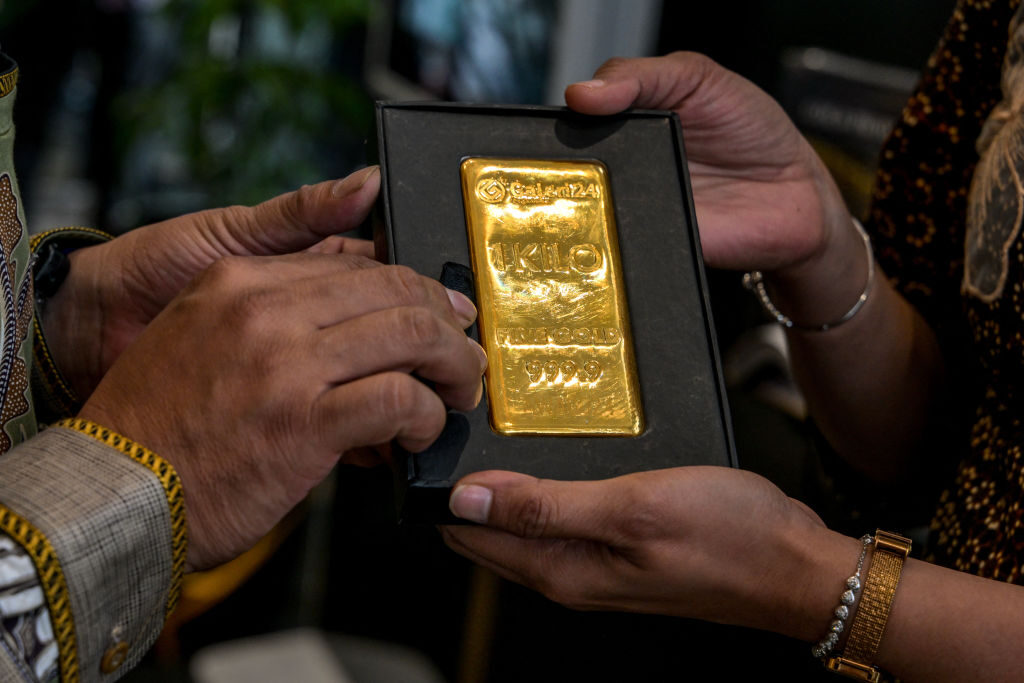Gold reached new highs in the lead-up to Donald Trump’s tariffs announcement yesterday. Though it has now slipped just below $3,100 an ounce, its rapid rise this week forced analysts to revise their target prices. Had gold been bought at the turn of the millennium, the investment would have increased 12 times over during the interim — three times the increase of the US stock market in that same period, and twice the return in New York real estate.
You have to go back half a century to see gold behaving this wildly. What is going on is pretty clear: amid rising geopolitical uncertainty and risks of a global trade war, investors and central banks alike are stockpiling gold, the most ancient safe port in a storm. But just why they are doing this is the more intriguing question.
A common explanation is that gold has become a safeguard against inflation and currency debasement. However, gold didn’t move all that much during the pandemic surge in prices, and it only really took off once inflation had come back down. As for debasement, since 2008 the most successful hedge against currency debasement — in fact, an invention created expressly to exploit debasement — has been Bitcoin. Yet since the start of the year it has floundered, despite Trump’s patronage. The price of gold against Bitcoin is now rising, which suggests investors may be losing faith in crypto as well.
This could point to the reason for the turn to gold, particularly among central banks: its rise may be the flip side of the dollar’s decline. Its 20% increase since the start of the year would, if annualised, amount to a near-doubling, but the precious metal has been more restrained against other world currencies such as the euro and the yen.
That’s because against a basket of global currencies, the dollar is down some 6% since the start of the year. It may be that the high degree of volatility and arbitrariness which Trump has injected into the world economy is causing foreigners to tiptoe to the exits. Equally, his backing of crypto and pledge to create a Bitcoin reserve may have turned the digital currency from a perceived alternative to the dollar into something intertwined with it. As the dollar’s appeal has waned, so perhaps has Bitcoin’s.
If there is such a trend against the dollar, Trump didn’t start it. Hesitancy about the currency predates him, and it didn’t feature prominently in his first term of office. Nevertheless, his second administration may be accelerating the emerging tendency. The increasing weaponisation of the dollar in sanctions regimes in recent years, which has now been joined by his team’s talk of dubious schemes such as the Mar-a-Lago Accord, may be souring the world on the US currency.
All told, we may be in the very early stages of the search for alternative reserve currencies, as it appears that central banks are selling some of their dollar assets and parking the receipts in gold. The metal has always played a role in global currency reserves, and it may now be a stop on the route to other stores of value. Because no other economy has the open financial system and deep pools of capital the US has, there is no obvious replacement to the dollar as the world’s reserve currency — at least not yet.
That doesn’t mean, however, that the search for alternatives hasn’t begun. And if so, given the volume of foreign money tied up in US stocks and bonds, America could be in for a painful economic future.











Join the discussion
Join like minded readers that support our journalism by becoming a paid subscriber
To join the discussion in the comments, become a paid subscriber.
Join like minded readers that support our journalism, read unlimited articles and enjoy other subscriber-only benefits.
Subscribe